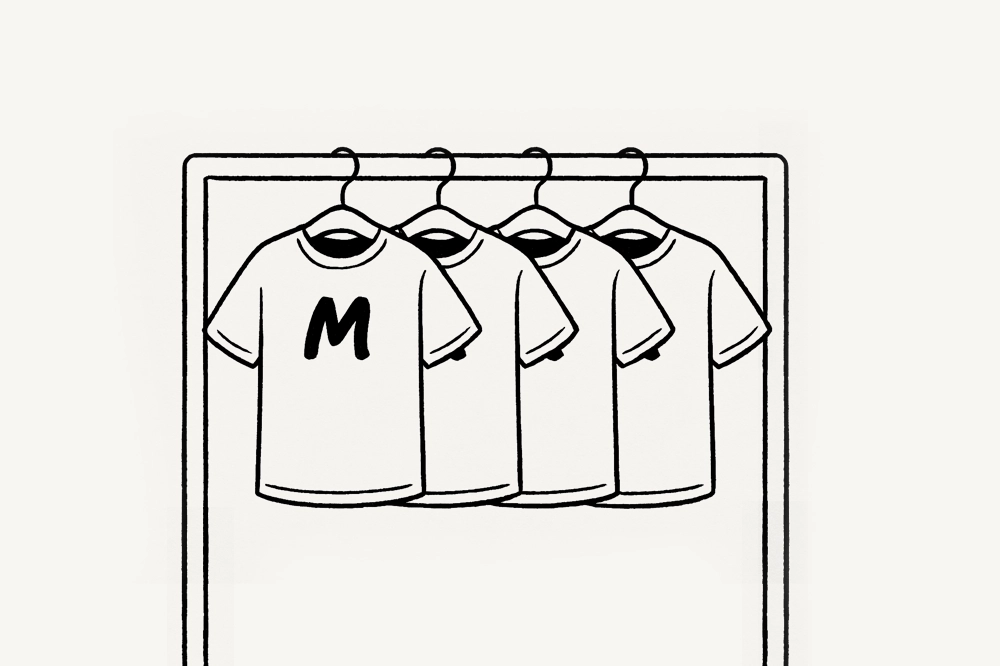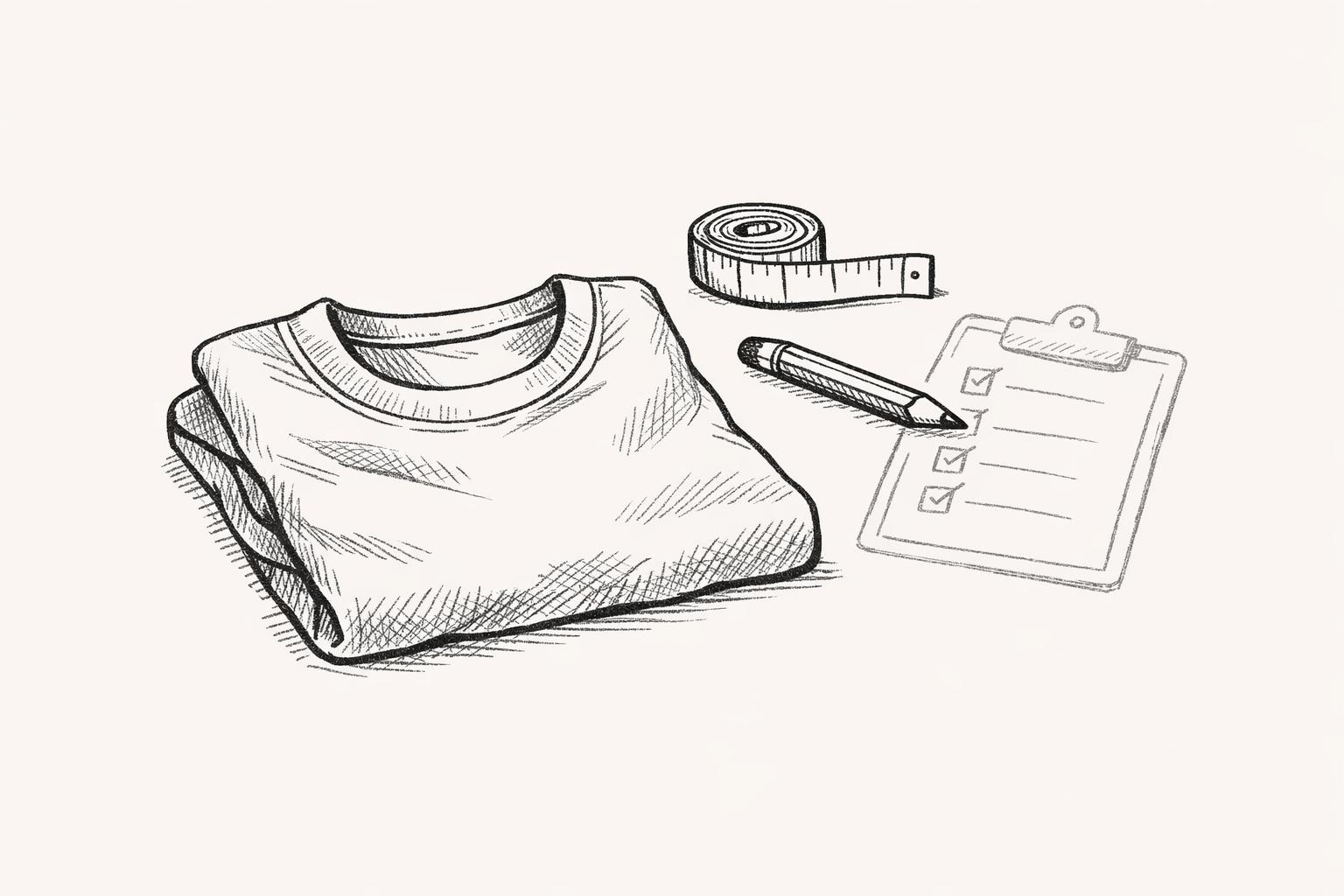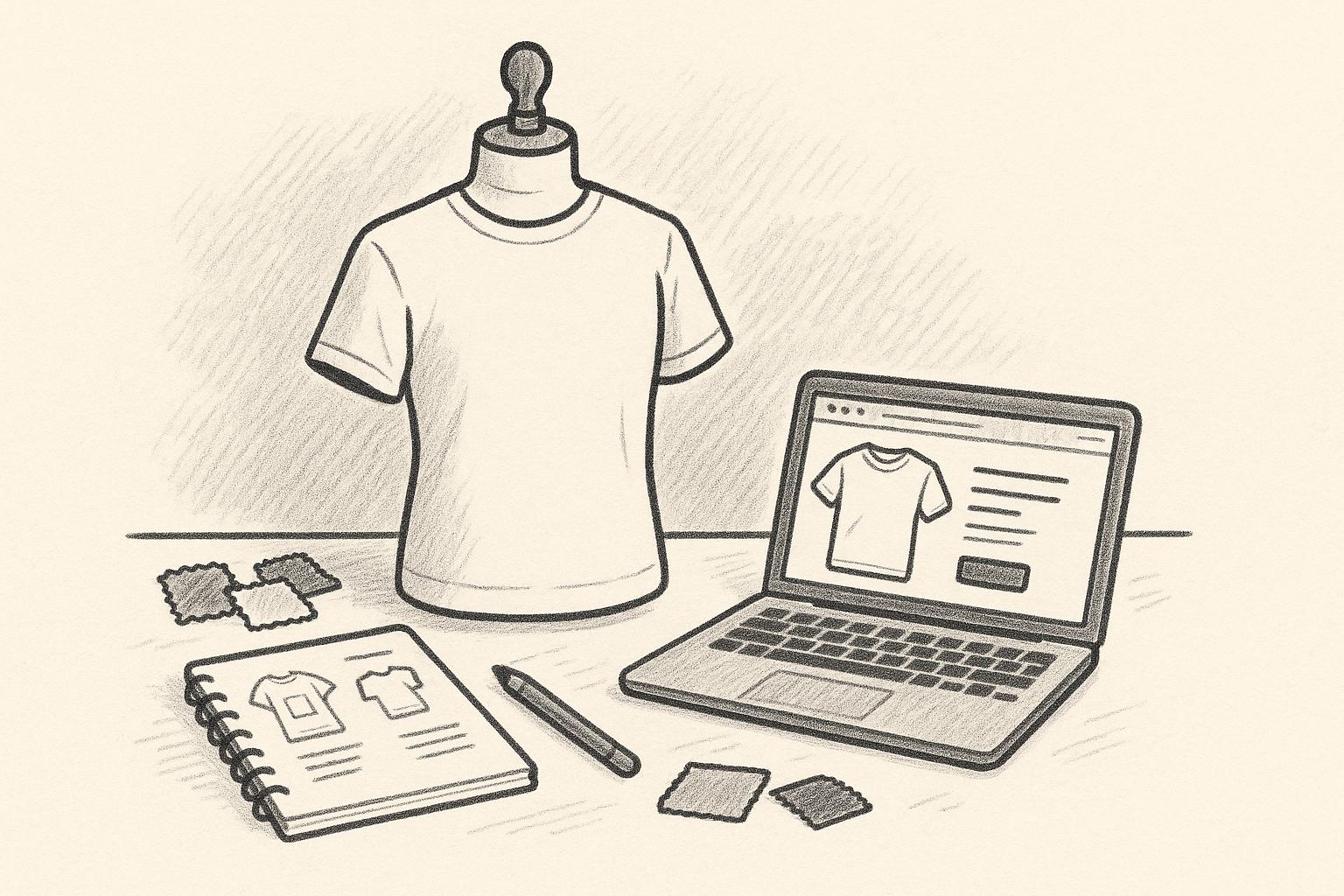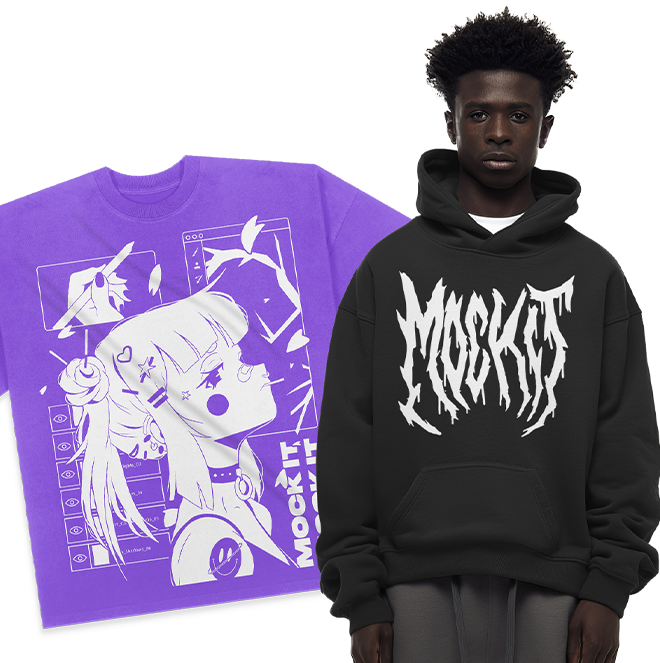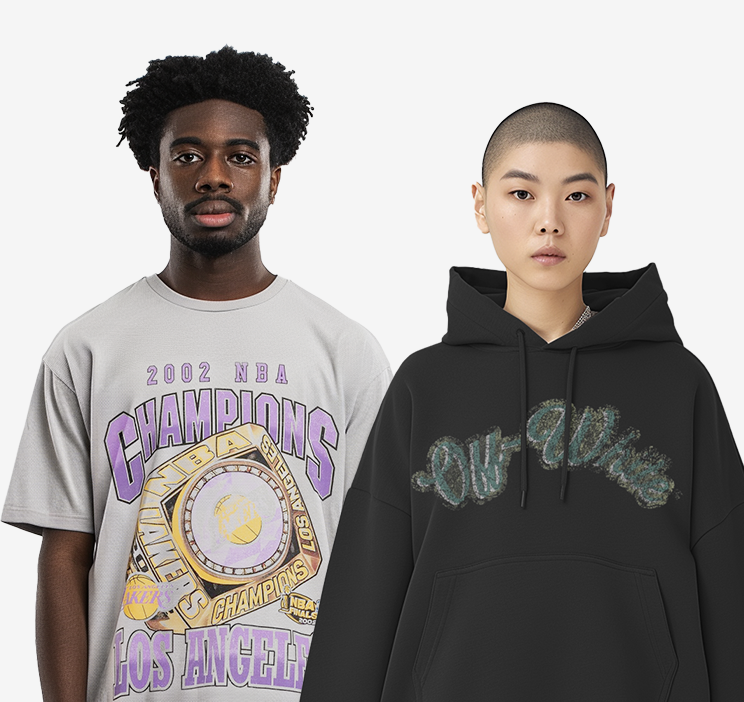Consistency in apparel mockups isn’t just about looking good – it’s a critical factor for building trust, boosting sales, and reducing returns in e-commerce. Here’s why it matters and how it helps your brand:
- Higher Revenue: Consistent visuals can increase conversion rates by up to 30% and boost revenue growth by 10–20%.
- Customer Trust: 75% of consumers judge credibility by design, and 71% feel inconsistent branding creates confusion.
- Better Brand Recognition: Uniform mockups can improve brand recognition by up to 80%, making your products instantly identifiable.
- Reduced Returns: Clear and accurate visuals help set expectations, cutting down on returns caused by mismatched customer expectations.
- Multi-Platform Consistency: 90% of customers expect uniform branding across all platforms, which directly impacts loyalty and trust.
Key Takeaway: Consistent apparel mockups enhance professionalism, increase customer confidence, and directly impact your bottom line. Whether you’re showcasing t-shirts or hoodies, uniformity in design, color, and presentation is a must for building a reliable and recognizable brand.
How To Create A Strong Visual Identity For Your Fashion Brand
How Consistency Builds Brand Trust and Credibility
Trust grows when interactions are consistent and reliable. In the world of apparel e-commerce, maintaining consistent mockups plays a key role in building that trust. They not only highlight professionalism but also show a brand’s attention to detail.
In fact, 71% of consumers believe inconsistent branding creates confusion, while brands that stick to a cohesive visual identity can boost profitability by over 20%. Consistent visuals offer a predictable and polished experience, giving customers the confidence they need to make a purchase. This sets the stage for understanding how meticulous visual care strengthens brand trust.
Building Trust Through Attention to Detail
Details matter – a lot. Consistent lighting, sharp image resolution, and precise design placement send a message of quality and care. When mockups accurately represent fabric textures and types, they reflect honesty about the product customers will receive.
The effects of such precision go beyond individual products. Visual consistency can increase brand recognition by up to 80%. When customers can immediately identify a brand’s style, they’re more likely to trust new products because that consistency signals dependability.
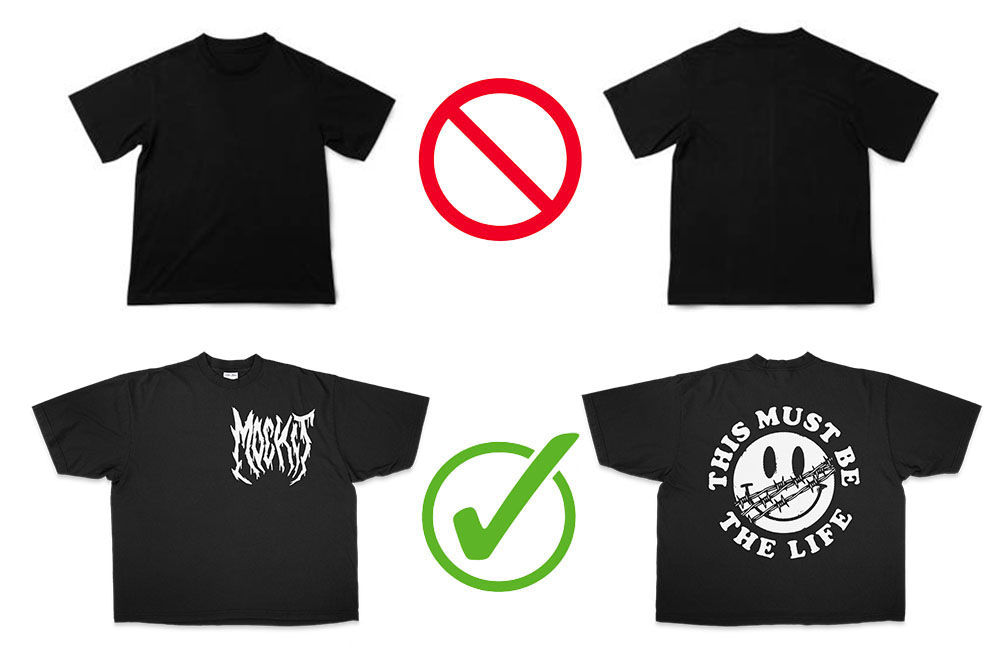
Creating Professional Visual Branding
Professional visual branding isn’t about being flashy; it’s about being dependable. Mockups that stick to uniform styles – whether it’s background choices, model poses, or product angles – create a sense of stability and reliability. This consistency shows that your brand is well-organized and values the customer experience.
Take the 2010 Gap logo controversy as an example. A sudden and unexpected logo change led to a loss of customer trust, proving how much people connect with consistent visual elements. Disrupting that connection can have long-lasting consequences.
To maintain this trust, brands should ensure every visual touchpoint aligns – whether it’s color codes, typography, or design patterns. When a customer sees a t-shirt mockup or a hoodie mockup, they should instantly recognize it as part of the same trusted brand.
Polished and consistent visuals also reduce hesitation during the buying process. Customers feel more confident purchasing from a brand that looks professional and reliable. This confidence often leads to higher conversion rates and fewer abandoned shopping carts.
Consistency as the Foundation of Brand Identity
A strong brand identity thrives on consistency, especially when every mockup reinforces your core visual style. Brand identity isn’t just about logos or slogans – it’s the complete visual story customers experience at every interaction. When your apparel mockups follow a uniform design approach, they become powerful tools in shaping that story. In fact, 90% of potential customers expect a consistent brand experience across all platforms, highlighting how crucial this is for capturing and retaining attention.
Consistent mockups do more than showcase your designs; they instantly communicate your brand’s unique style. Whether it’s a t-shirt, hoodie, or sweatshirt, repeated exposure to cohesive design elements helps customers recognize and connect with your brand. Beyond aesthetics, this uniformity signals reliability, which can deepen customer trust.
The financial benefits are equally compelling. 68% of company stakeholders link 10% to over 20% of revenue growth to brand consistency. By creating a cohesive and memorable experience, you not only drive sales but also foster customer loyalty. This consistency lays the groundwork for lasting brand recognition.
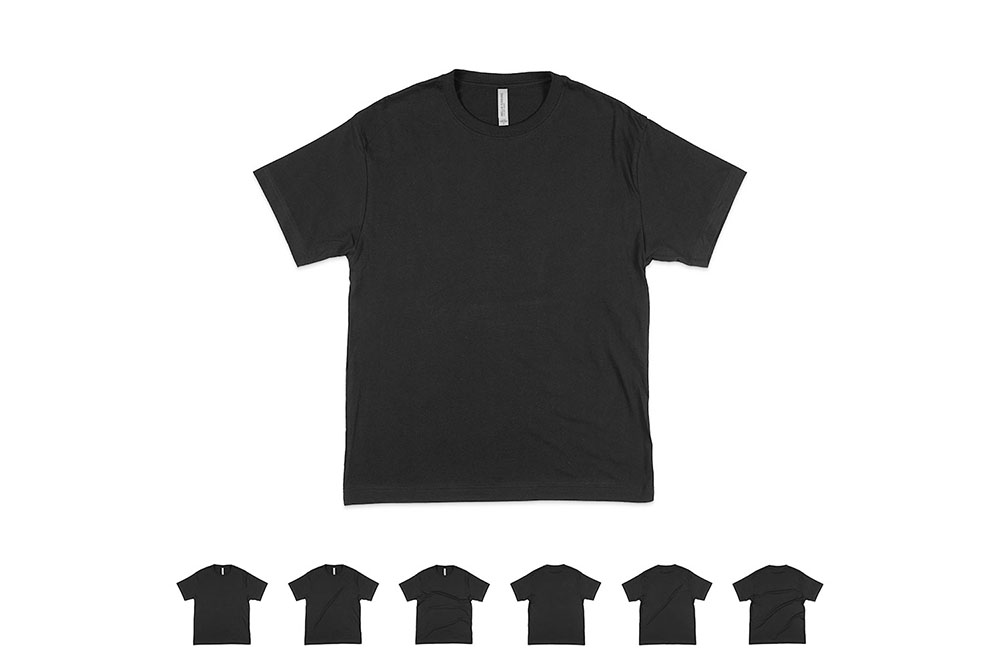
Creating Visual Themes for Brand Recognition
Think of visual themes as your brand’s signature – they make your products instantly identifiable. For instance, sticking to consistent color palettes across apparel mockups can increase brand recognition by up to 80%. By using the same background colors, lighting, and design placements across your product presentations, you create a visual language your audience can easily associate with your brand.
Maintaining these patterns is essential. If your brand leans toward minimalist white backgrounds for t-shirt mockups, applying the same approach to hoodies and sweatshirts reinforces your identity. This consistency ensures that your audience focuses on the design itself rather than being distracted by inconsistent styling choices.
Mock It simplifies this process with its extensive library of over 5,000 clothing mockup templates from 45+ brands. These templates, combined with customizable features, allow you to experiment with different products while keeping your visual themes intact.
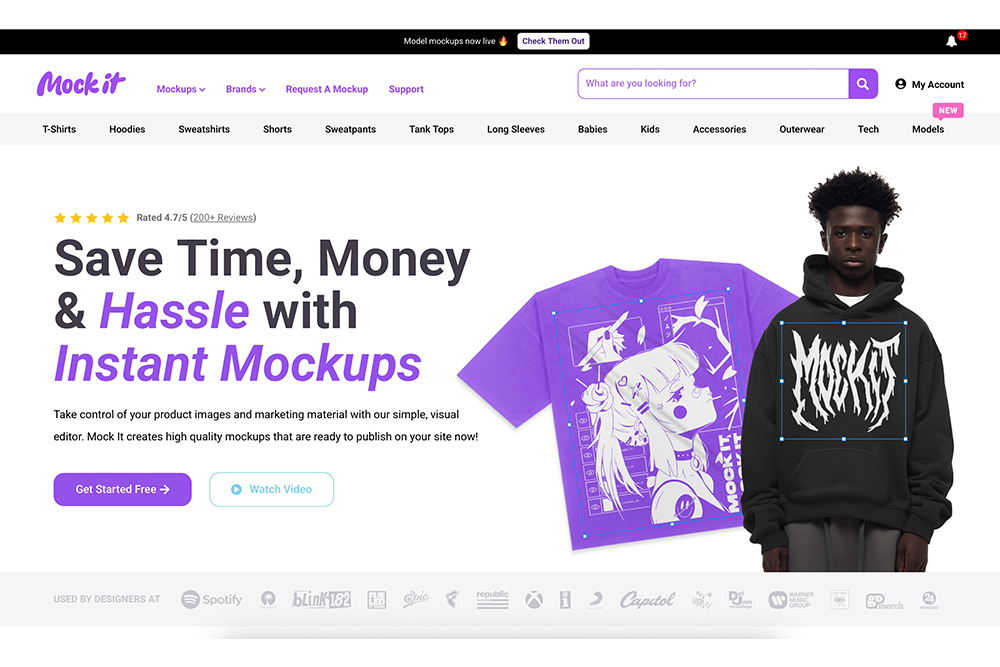
Multi-Channel Branding with Uniform Mockups
In today’s world, customers encounter brands across multiple platforms – websites, social media, email campaigns, and advertisements. Consistent mockups help unify your visual presence across these touchpoints, creating a seamless and trustworthy experience. Consistent brand messaging can boost revenue by 10–20%, making this approach a direct driver of growth.
Uniform mockups also showcase professionalism and attention to detail. For example, when a customer sees your hoodie mockup on Instagram and later visits your website, the consistent presentation reassures them of your brand’s reliability. Beyond aesthetics, this approach can also improve efficiency – reducing delays and speeding up production workflows.
"It’s not just design. It’s operational clarity wrapped in visual confidence." – The Printwear Company Ltd
A polished and cohesive brand image across all platforms builds trust and credibility. Whether customers discover your products through social media, organic search, or direct website visits, they’ll encounter high-quality visuals that reflect your brand’s professionalism and attention to detail.
sbb-itb-1e8f9ab
Improving Customer Experience with Consistent Mockups
In e-commerce, customer experience often hinges on a simple yet crucial factor: setting clear and accurate expectations from the very first click to the moment the product arrives. For apparel brands, consistent mockups across the entire product line play a big role in creating a visual language that customers can rely on. This consistency isn’t just about aesthetics – it’s a cornerstone of professional branding that directly impacts the customer journey. Reliable visuals help set clear expectations, which can reduce returns and build trust, especially in a market where U.S. apparel return rates are notably high.
Online apparel returns in the U.S. average 24.4%, with some reports showing rates as high as 30% to 40%. Even more striking is that 39% of these returns are due to sizing issues, while 28% occur because the item didn’t match customer expectations. These numbers highlight a huge opportunity for brands to bridge the gap between what customers see online and what they receive in real life. Let’s dive into how accurate displays and clear imagery can reduce returns and eliminate confusion.
Accurate Product Display
Realistic and consistently detailed mockups are the foundation of trust in online shopping. When mockups follow uniform standards for lighting, angles, and detail representation, they provide customers with a transparent and reliable view of the product.
The secret lies in precision and clarity. Realistic mockups ensure transparency by offering a clear and honest representation of the product. They avoid misleading visuals and set accurate expectations, showing fabric textures, lighting effects, and other details that help customers make informed decisions. This not only reduces returns but also strengthens long-term trust in your brand.
Detailed 3D mockups take this a step further by showcasing exact design placement, proportions, and color schemes. For example, customers can see how a graphic design will sit on a t-shirt or how colors might look under varying lighting conditions. This level of detail minimizes surprises and helps shoppers feel more confident about their purchases.
Platforms like Mock It simplify this process by offering a library of over 5,000 clothing mockup templates. With support for precise HEX codes and high-resolution images, Mock It ensures that colors and textures appear as they will in real life, removing the guesswork that often leads to disappointed customers.
Reducing Returns and Customer Confusion
Accurate and consistent visuals don’t just build trust – they also help cut down on costly returns. One of the biggest sources of customer confusion is inconsistent imagery across a product catalog. When shoppers browse your site, they should experience the same quality and style of presentation whether they’re viewing t-shirts, hoodies, or sweatshirts. This consistency helps them understand your sizing, fit, and quality standards across all product types.
The financial stakes here are enormous. In 2021, returns accounted for $761 billion in merchandise that was sold but didn’t translate into revenue. For individual brands, this means not only lost sales but also increased operational costs tied to processing returns and managing inventory.
Smart visual strategies can make a big difference. For instance, 86% of top e-commerce sites display product thumbnails on the cart page, and 60% of sites with an order review page include product thumbnails there as well. These thumbnails, whether exact replicas of the main product image or simplified variations, allow customers to quickly verify details before completing their purchase, reducing errors and returns.
For custom-printed merchandise, reducing returns isn’t just about saving money – it’s about ensuring customers receive exactly what they expect. Showing how different sizes look on models or mannequins can address fit concerns before they lead to returns.
The best approach combines high-quality, consistent mockups with detailed size charts and product descriptions. When customers can see exactly how a design is placed and understand how garments fit across different body types, they’re more likely to buy with confidence, knowing they’ll get what they expect. This level of clarity benefits not only the customer but also the brand, creating a smoother, more reliable shopping experience.
Tools and Methods for Achieving Visual Consistency
Consistent visuals are essential for building a strong brand identity, and having the right tools and methods can make this process much more efficient. Whether you’re a small startup or a well-established company managing a vast product catalog, adopting systematic approaches can help you create professional, cohesive apparel mockups that meet customer expectations.
Creating a Style Guide for Mockups
Think of a style guide as your brand’s visual playbook. It ensures that every mockup adheres to the same standards, no matter who on your team creates it. A well-crafted visual brand style guide ties together all the elements of your brand’s identity, saving time, simplifying workflows, and telling your brand’s story. For apparel mockups, this means setting clear rules for lighting, angles, color accuracy, and design placement.
Your guide should include detailed technical specifications, such as:
- Lighting and Angles: Define the ideal lighting conditions and camera angles for your mockups.
- Backgrounds: Specify background treatments to maintain uniformity.
- Color Codes: Include HEX codes for digital use, CMYK values, and Pantone colors for print. This ensures color consistency across all platforms and materials.
- Typography: Outline guidelines for headline fonts, body text, and other typefaces that reflect your brand’s personality. Provide examples of correct and incorrect applications to avoid common design mistakes.
Color accuracy is especially important. Your guide should address how colors should appear under different lighting conditions and on various fabric types. Similarly, typography details – such as when and where to use specific fonts – help maintain a cohesive look, especially for text-heavy designs.
To make your style guide effective, keep it accessible and easy to use. Compile everything your creative team might need in one organized, digital location. Remember, a style guide isn’t static – it should evolve with your brand.
Once your style guide is in place, the next step is to use specialized platforms to simplify the mockup creation process.
Using Platforms to Streamline Mockup Creation
Modern mockup platforms have transformed how brands create consistent visuals. These tools offer features like customizable templates, design libraries, and automation, which help reduce production time while maintaining a polished, professional look.
For example, Mock It provides a wide range of mockup templates and tools designed to enforce design standards. Features like precise color libraries, background removal, and AI-powered tools ensure every mockup meets professional guidelines. The platform’s template system standardizes essential elements like lighting and design placement, while centralized asset management minimizes inconsistencies across team projects. Additionally, API integration allows brands to automate mockup generation, seamlessly fitting into existing workflows.
These platforms make it easier than ever to produce high-quality, consistent visuals, setting the stage for even more efficient processes like automated bulk mockup creation.
Advantages of Automated Bulk Mockup Creation
For brands juggling large product catalogs, automated bulk mockup creation is a game-changer. These tools can generate multiple mockups simultaneously, saving time while ensuring consistent quality – a crucial factor for maintaining a strong brand image.
Automation eliminates the risk of manual inconsistencies, ensuring every mockup aligns with your brand’s style. Whether you’re introducing a handful of new designs or rolling out dozens, the process remains efficient and reliable. This scalability is especially valuable in the fast-paced fashion industry, where quick turnarounds are often necessary.
Another advantage of automated tools is their ability to identify potential design issues early, streamlining the entire workflow. Plus, their user-friendly interfaces make them accessible to designers of all skill levels, empowering brands of any size to produce professional-quality mockups with ease.
Conclusion: The Business Value of Consistent Apparel Mockups
Consistent apparel mockups are more than just a design detail – they’re a cornerstone of building customer trust and driving revenue. When brands commit to maintaining visual consistency, they often see tangible improvements in conversion rates and how their brand is perceived. This approach not only supports the strategies discussed earlier but also delivers measurable business outcomes.
Why Consistency Matters for Design Professionals
Studies reveal that consistent product images can lead to at least a 10% increase in conversion rates. Additionally, standardized visuals enhance purchase intent by 10% and improve website design perception by 26%. These figures highlight the financial potential that comes with prioritizing uniformity in apparel mockups.
Beyond boosting sales, this consistency reinforces brand recognition, encourages quicker purchasing decisions, and fosters customer loyalty. It also simplifies website updates for developers and reduces customer confusion and returns. These benefits make it clear that a focus on consistent visuals offers both immediate and long-term value.
How to Achieve Visual Consistency
To harness these benefits, a structured approach is essential. Start by creating a detailed branding guide that outlines specific color palettes, typography, and design standards. Train your team to follow these guidelines and schedule regular audits to ensure everything stays on track.
Tools like Mock It can make this process easier. With features like automated bulk mockup creation, precise color libraries, and standardized templates, platforms like this help brands maintain consistency effortlessly. API integrations further streamline the process, allowing mockups to align with brand standards without requiring constant manual input.
Brands that prioritize visual consistency see improvements in key areas like conversion rates, customer trust, and operational efficiency. In a competitive e-commerce environment, consistent mockups are no longer optional – they’re essential for building a business that stands out and earns customer loyalty.
FAQs
Why is consistency in apparel mockups important for building trust and brand credibility?
Consistency in apparel mockups plays a key role in shaping a professional and memorable brand identity. When your mockups maintain a uniform style, color palette, and presentation, they create a seamless visual experience that customers can easily recognize. This polished look helps establish trust, signaling that your brand values quality and pays attention to detail.
A cohesive visual strategy also strengthens your brand’s credibility. Over time, customers begin to associate your designs with your brand, fostering familiarity and confidence in your products. This connection not only enhances trust but also encourages loyalty – an essential factor for thriving in the highly competitive apparel industry.
What should a style guide include to ensure consistent apparel mockups?
To keep apparel mockups visually consistent, a style guide should cover these essential aspects:
- Color palettes: Clearly define the exact colors to use for garments, backgrounds, and branding elements. Consistency here ensures a polished look.
- Typography: Specify fonts, sizes, and styles for any text in your mockups to maintain uniformity across designs.
- Logo placement: Outline precise rules for logo size, positioning, and alignment to avoid any guesswork.
- Design elements: Include guidance on patterns, textures, and recurring visual themes to tie everything together.
A well-thought-out style guide ensures your mockups present a unified and professional brand image, making your designs more impactful in e-commerce or marketing efforts.
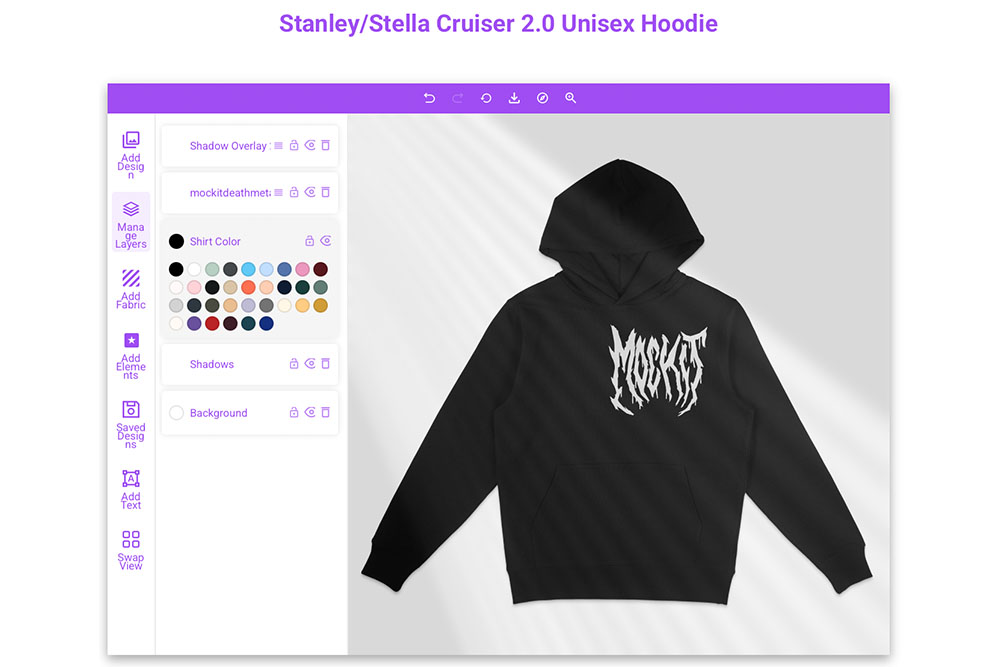
How does Mock It help ensure consistent apparel mockups for branding and e-commerce?
Mock It streamlines the creation of apparel mockups with top-notch, customizable templates for various clothing items. These templates help maintain consistency in design details like colors, print areas, and styles, making it simple to keep your brand image cohesive across your website, social media, and marketing materials.
Equipped with features like a background remover, scene creator, and extensive color libraries, Mock It cuts down on manual tasks and reduces the risk of mistakes. This not only saves time but also ensures your visuals look polished and perfectly aligned with your brand across all platforms.
